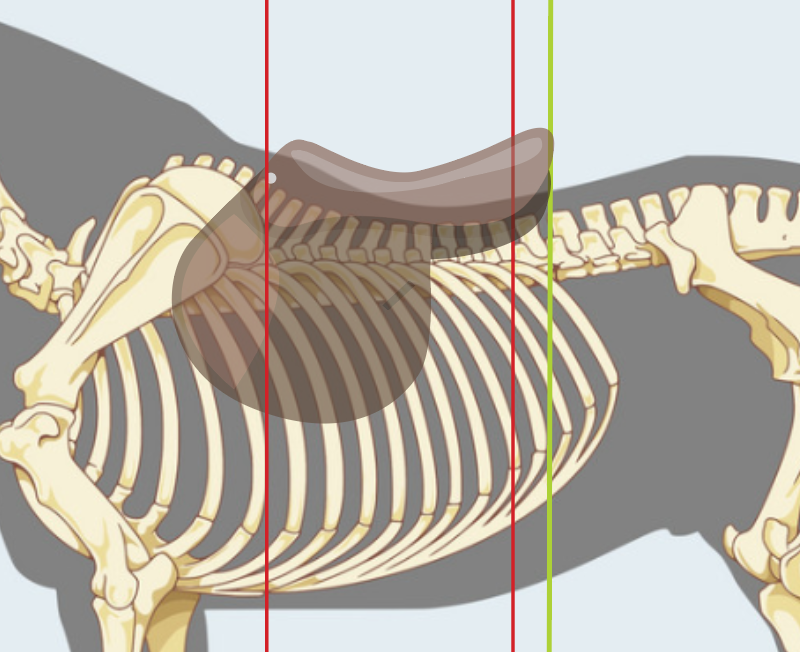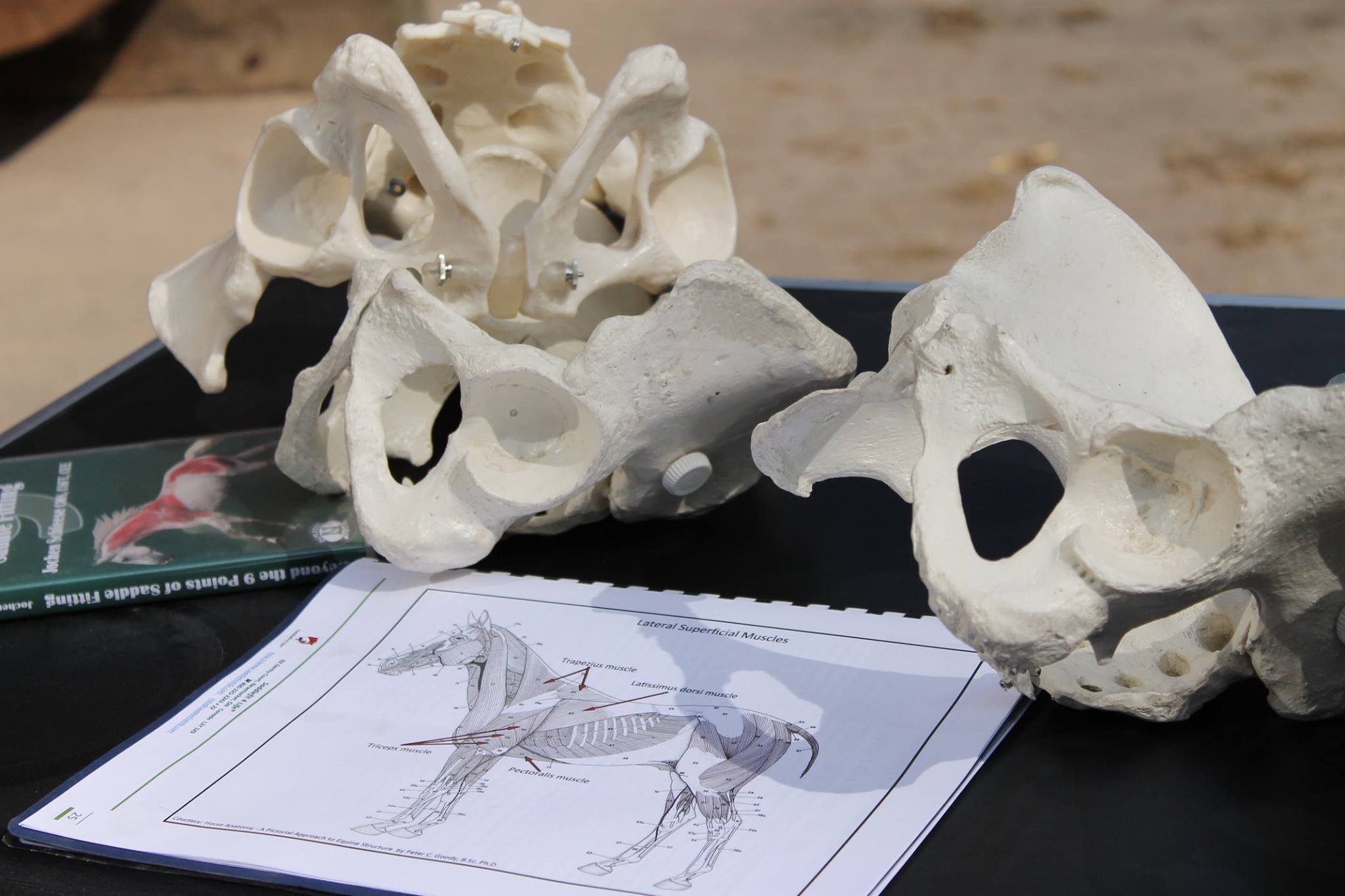Saddle length is an issue I have been noticing more and more in the past few years, as breeding across all breeds has shifted its focus to creating horses with longer legs and a shorter back while the saddle industry lags behind in creating saddles that are suitable for these modern breeds.
Many of us are familiar with the term “short-backed” to describe a horse, but few of us are aware that even a horse with a back that appears to be of normal length may actually have a very short saddle support area. The length of the saddle support area (the area where the saddle must sit) is what saddle makers and saddle fitters are concerned with, since this will determine how long the panels of this particular horse’s saddle must be.
One common saddle fitting issue is that the panels on dressage saddles often are too long for their backs. In order that these horses may develop to their fullest potential, and work willingly, happily and without pain, it is crucial that they have a saddle with panels that are the correct length for their backs, without impinging on the ovaries or the kidneys.
In order to identify your horse’s saddle-support area – the area where the saddle must sit – do the following:
1. With a piece of chalk, outline the edge of your horse’s shoulder blade.
2. Locate your horse’s last floating rib. To do this, find where his hairlines come together in the area of his flank and draw a line straight up to his spine.
First, the saddle must sit behind the shoulder. But, and particularly at the canter, a saddle that is too long often will get driven forward into the shoulder. This can produce a build- up of scar tissue on the scapula, and over time, the scapula may actually be chipped away by the tree points of the saddle.
Second, the saddle cannot extend past the last floating rib. If a saddle is too long for a particular horse, the rear of the panels
will extend past the horse’s saddle support area. This is extremely uncomfortable for the horse, as it puts pressure on his lumbar region. A horse ridden in a saddle that is too long will often tighten his lower back muscles; in some cases, you can actually see the horse hollow and drop his back in an attempt to get away from the pressure of the saddle. He may even buck in extreme cases, in an effort to get the weight off his lumbar area. Finally, he may have difficulty moving forward into the canter, or may simply be persistently “off” for no readily apparent reason.
If these are issues you have been facing, and have been unable to actually attribute them to anything ‘real’ (like illness of some sort for example) then perhaps you might consider that it could simply be that the saddle is too long for your horse’s back and is making him extremely uncomfortable – which is why this ‘acting out’ occurs. Think about how you would feel if you had something constantly pounding into your kidneys.
Sometimes you have to look past the obvious symptoms to find the cause.

Interested in Learning More About Saddle Length, and the other 9 Core Points of Saddle Fitting?

Join the thousands of students who have taken the well-being of their horse into their own hands! Evidence-based, easy to understand, comprehensive saddle fit education for ALL saddle styles.
